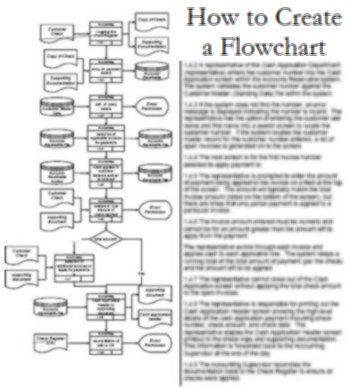"How-To" Presentations: 5 Different Ways

Creating a How-To presentation is quite different from many other types of mini-course. You’re explaining how to do something you already know, so words fall short. That is, words don’t have as much of a role as in other kinds of explanation, but they are still essential. (Very few how-tos can be done with no words at all.)

-
Ironing a shirt, like tying your shoelaces, is something best learnt by watching. This is because there’s so much visual detail. Naturally, the best way would be to use a video with narration—that is, recording using a camcorder, ironing the shirt while saying what you’re doing.
Sure, you could also use animations, or possibly graphics, but that would be much harder (on yourself and on your time) than doing a camcorder recording!
-
Explaining how to clean a TV screen is quite different from our first example, the primary reason being that screens are well-described by words. That is, you know what the “edges” and “corners” of the screen are, and what the “swivel base” is, but what do you call the strip on a shirt that holds the buttons? What do you call the parts of the collar that tend to get curled up?
For this, a good idea is to explain the process in words, illustrating as needed with photographs. You could use your own photos, or cut-outs of stock photos.
-
A résumé is all about the words, so it’s obvious that “how to write it” would be all in words. You say what you should put on it, what words to format in what way, and so on.
But even here, you could do with some screenshots. What about the effect of different fonts? Illustrate with a screenshot. How do you change the style of bullet lists in the word processor? Illustrate with a screenshot.
-
How to use a software is best explained using a screen recording program (example: Camtasia Studio). It’s resource-heavy in terms of money and time, but worth it in terms of clarity. Not for software your audience is familiar with, of course: If your explanation is about how to change the spell-checker language in Word, one or two screenshots, or perhaps just a textual explanation, will do. Screen recording software comes in when you’re explaining unfamiliar or complex software (say Photoshop).
Screen recorders record everything that happens on your screen. To explain how to “use layers in Photoshop,” you run the screen recorder, do stuff with Photoshop as you would, and have a recording that showcases what you just did. Adding a narrative would often be required.
An interesting thing here is that in many cases, it’s easier on the creator of the how-to and on the learner/audience if screen actions are recorded. You’ll sometimes see 15-step explanations of how to do something in Photoshop. It takes longer to read and longer to understand. The writer translates his actions into words, and the reader does the reverse!
-
Here’s an uncommon way of explaining a recipe: Using just an audio recording. Speak out the recipe step by step. The person using your recipe can play back your recording while in the kitchen, clicking “Pause” after every few actions. This would feel more natural than looking at a recipe printout, assuming the user has a remote for the audio player.
We’re used to cooking shows on TV and recipe websites, so maybe this isn’t such a good idea. But it does illustrate that there are different ways to explain different things!
Thoughts? Comments? Mail in!
